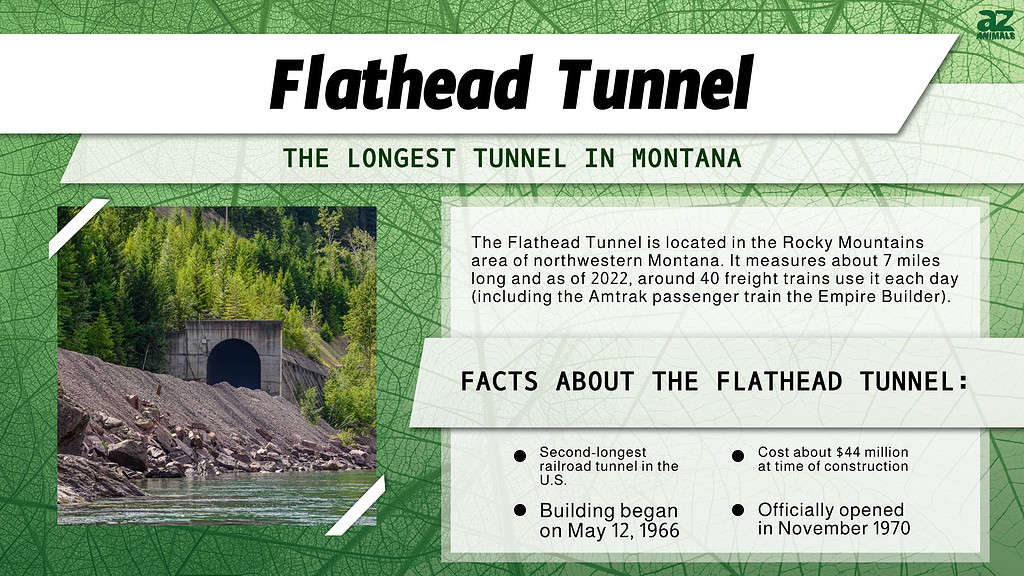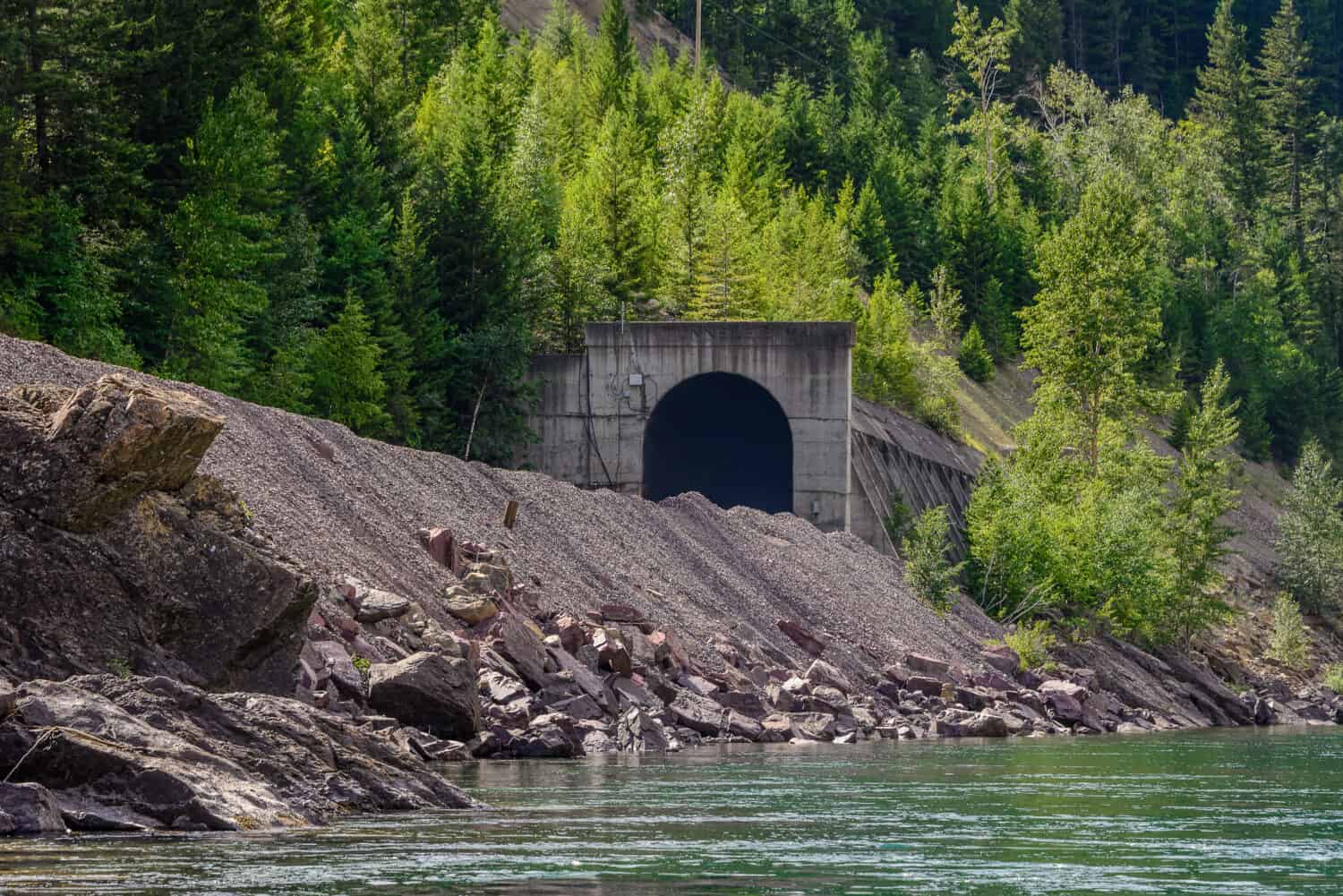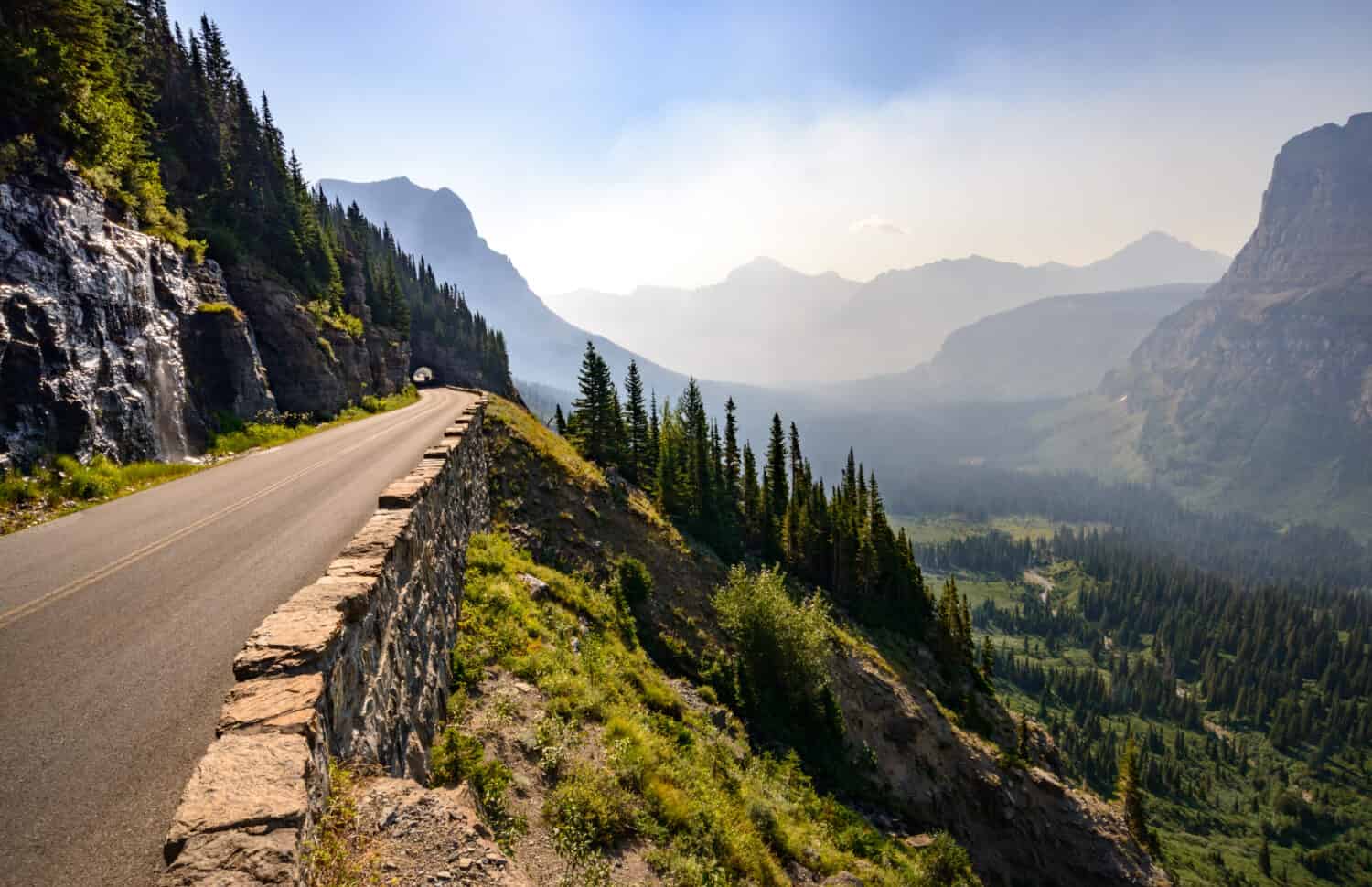
Have you ever wondered about the longest tunnel in Montana? If so, you’re not alone.
Tunnels allow humans to access different locations better. This includes areas in mountainous terrains, such as the purpose of the longest tunnel in Montana. Although they may be rare today, functioning tunnels are still used for railroads and recreation.
To learn more about Montana’s longest tunnel, keep reading below!
What Is the Longest Tunnel in Montana?
The longest tunnel in Montana is the Flathead Tunnel. This tunnel is located in the northwestern portion of the state.
Below, you’ll find more details about the Flathead Tunnel.

The Flathead Tunnel is the longest tunnel in Montana, around 7 miles long.
©Cynthia Lowe/Shutterstock.com
About Flathead Tunnel
The Flathead Tunnel is located in the Rocky Mountains area of northwestern Montana. This tunnel is a part of the BNSF Railway’s Kootenai River Subdivision. It is named after the Bitterroot Salish, a group of Native American Nations also known as the Flathead.

Glacier National Park is near Flathead Tunnel.
©Zack Frank/Shutterstock.com
Size
Flathead Tunnel is the second longest railroad tunnel in the entirety of the United States. The first place goes to the Cascade Tunnel in Washington State, not too far away from Flathead Tunnel.
From one entrance to the other, Flathead Tunnel measures around 7 miles, or 11 kilometers, long.
History
The longest tunnel in Montana was first built by the Walsh Construction Company and the Walsh-Groves for the Great Northern Railway, one of the United State’s major systems. At the time of its construction, the Flathead Tunnel cost around $44 million to build. Today, this would be about $285 million.
Flathead Tunnel and its seven miles of track are just one part of a 60-mile route. Its construction was necessary to maintain transportation after the construction of the Libby Dam. Construction began on May 12, 1966, and took over six years to complete. Flathead Tunnel officially opened in November 1970, with the first train to pass through the tunnel.
Building the tunnel was a strenuous and dangerous process, however. Two people even died in two different events during construction.
Flathead Tunnel Today
Today, Flathead Tunnel is still active. As of 2022, approximately 40 freight trains utilized the tunnel each and every day. This includes the popular Empire Builder, an Amtrak passenger train. As modern trains go through the tunnel, they reach speeds of around 50 miles per hour. Because of this, the time spent in the tunnel is short.
If you are to visit the surrounding areas around the longest tunnel in Montana, you can expect to see common animals such as bobcats, pronghorns, and even grizzly bears!

The
Empire Builderis one of the trains that use the Flathead Tunnel.
©Jeff Williams/Shutterstock.com
Where Is Flathead Tunnel Located on a Map?
Flathead Tunnel is situated in the Rocky Mountains near Trego, Montana. It is in Lincoln County. The tunnel is around 28 miles to the west of Whitefish, a resort town known for Glacier National Park.
The photo featured at the top of this post is © Cynthia Lowe/Shutterstock.com
Thank you for reading! Have some feedback for us? Contact the AZ Animals editorial team.






